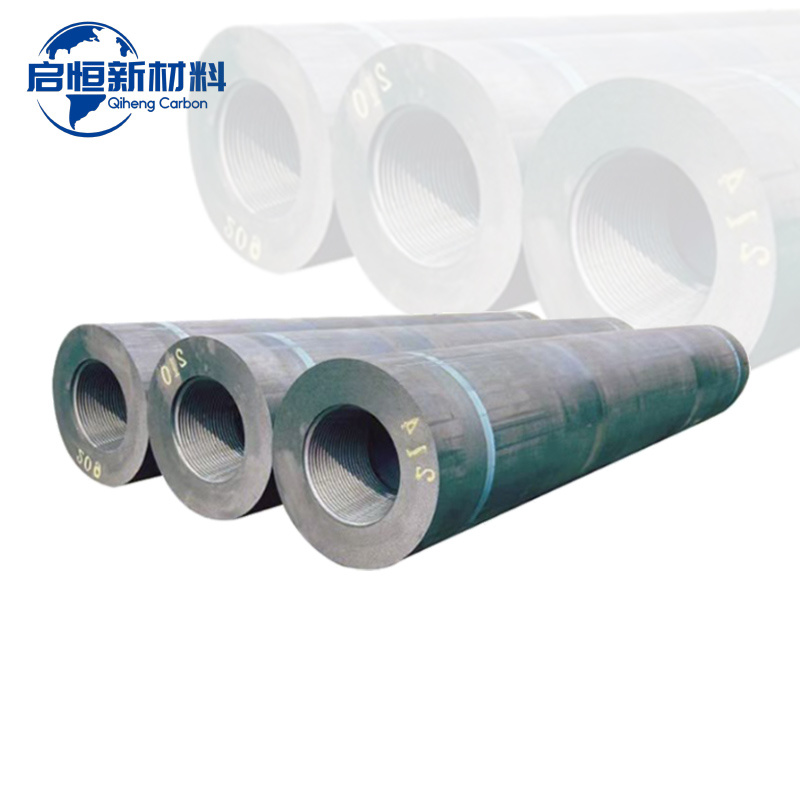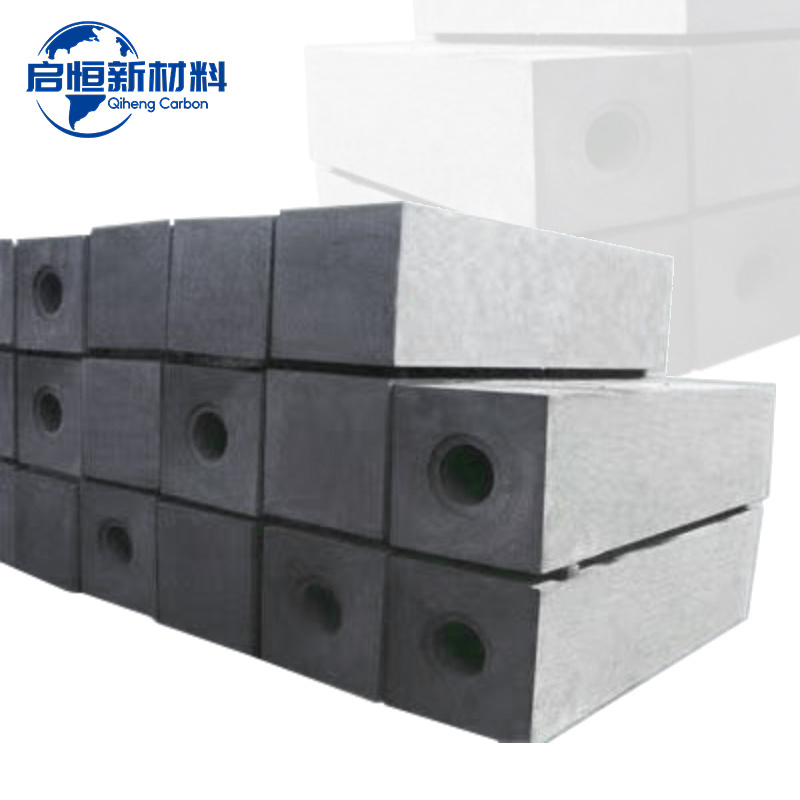Graphite Crucibles in the Production of Electronics: Essential Insights for Industry Professionals
Summary:
Graphite Crucibles in the Production of Electronics: Essential Insights for Industry Professionals
Table of Contents
1. Introduction to Graphite Crucibles in Electronics
2. Properties of Graphite Crucibles
3. Applications of Graphite Crucibles in Electronics
4. Benefits of Using Graphite Crucibles
5. The Manufacturing Process of Graphite Crucibles
6. Criteria for Selecting

Graphite Crucibles in the Production of Electronics: Essential Insights for Industry Professionals
Table of Contents
- 1. Introduction to Graphite Crucibles in Electronics
- 2. Properties of Graphite Crucibles
- 3. Applications of Graphite Crucibles in Electronics
- 4. Benefits of Using Graphite Crucibles
- 5. The Manufacturing Process of Graphite Crucibles
- 6. Criteria for Selecting the Right Graphite Crucible
- 7. Challenges in Using Graphite Crucibles
- 8. Future Trends in Graphite Crucible Technology
- 9. Conclusion
- 10. Frequently Asked Questions
1. Introduction to Graphite Crucibles in Electronics
In the realm of electronics manufacturing, **graphite crucibles** play a pivotal role in various processes, notably in the melting, casting, and refining of metals and alloys. Their unique properties make them indispensable for industries that require precision and high-performance materials. As we delve deeper into the significance of graphite crucibles, this article will provide a comprehensive overview of their properties, applications, and the critical factors that influence their selection and use in the electronics sector.
2. Properties of Graphite Crucibles
Graphite crucibles are revered for their exceptional thermal properties and chemical stability. Here are some of the key properties that make them suitable for electronic applications:
2.1 High Thermal Conductivity
Graphite exhibits excellent thermal conductivity, allowing for uniform heat distribution during melting processes. This characteristic ensures that materials reach their optimal melting points efficiently, which is crucial in electronics manufacturing.
2.2 Thermal Shock Resistance
Graphite crucibles can withstand rapid temperature changes without cracking or breaking. This **thermal shock resistance** is essential in production environments where materials are frequently heated and cooled.
2.3 Chemical Inertness
Graphite is chemically inert, meaning it does not react with most metals or other materials during the melting process. This property is vital, as it prevents contamination of the molten metal, ensuring high-quality end products.
2.4 Lightweight and Durable
The lightweight nature of graphite crucibles makes them easy to handle and reduces energy consumption during transportation. Their durability ensures longevity, reducing the frequency of replacements and overall costs.
3. Applications of Graphite Crucibles in Electronics
Graphite crucibles find extensive applications in various facets of electronics manufacturing, including:
3.1 Melting of Electronic Metals
Graphite crucibles are commonly used to melt metals such as gold, silver, and copper, which are essential for producing electronic components. The high melting points of these metals necessitate the use of materials that can withstand extreme heat without degrading.
3.2 Alloy Production
In electronics, alloying different metals is often required to achieve desired electrical properties. Graphite crucibles facilitate the precise melting and mixing of various metals, resulting in high-quality alloys that enhance electronic performance.
3.3 Sintering Processes
The sintering of ceramics and other materials in electronics production often requires heating to significant temperatures. Graphite crucibles are ideal for this task due to their ability to maintain structural integrity and thermal efficiency.
3.4 Casting and Molding
After melting, metals must be cast into specific shapes for electronic applications. Graphite crucibles provide a reliable medium for this process, allowing for intricate designs and specifications needed for electronic components.
4. Benefits of Using Graphite Crucibles
The adoption of graphite crucibles brings numerous advantages to electronics manufacturing:
4.1 Enhanced Production Efficiency
The ability of graphite crucibles to achieve higher melting temperatures quickly translates to reduced processing times. This increase in efficiency can significantly boost production rates.
4.2 Improved Product Quality
The chemical inertness of graphite ensures that the integrity of molten metals is maintained, preventing impurities that could compromise the quality of electronic components.
4.3 Cost-Effectiveness
Despite the initial investment, the durability and reduced need for frequent replacements make graphite crucibles a cost-effective solution in the long run.
4.4 Versatility in Applications
Graphite crucibles are adaptable to a wide range of metals and alloys, making them suitable for diverse applications within the electronics industry.
5. The Manufacturing Process of Graphite Crucibles
Understanding the manufacturing process of graphite crucibles provides insights into their quality and performance. The following steps outline how these crucibles are produced:
5.1 Raw Material Selection
High-purity natural or synthetic graphite is chosen for crucible production. The quality of raw materials directly impacts the final product.
5.2 Molding and Shaping
The graphite powder is mixed with a binding agent and molded into the desired shape. This step can involve various techniques, including pressing and extrusion.
5.3 Baking and Graphitization
The molded crucibles undergo a baking process at high temperatures to remove any volatile components. Following this, they are graphitized to enhance their structural integrity and thermal properties.
5.4 Quality Control
Finally, each crucible is subjected to rigorous quality control measures to ensure they meet industry standards and specifications.
6. Criteria for Selecting the Right Graphite Crucible
Choosing the appropriate graphite crucible is vital for achieving optimal results. Consider the following criteria:
6.1 Size and Capacity
The size of the crucible should match the volume of materials being processed. An oversized crucible may result in inefficient melting, while an undersized one could lead to overflow.
6.2 Shape
The shape of the crucible can influence heat distribution and material handling. Selecting the right shape is essential for specific applications.
6.3 Purity Level
High-purity crucibles are critical for applications requiring minimal contamination. Assessing the purity level of the graphite used is an important selection factor.
6.4 Thermal Properties
Understanding the thermal conductivity and shock resistance characteristics is essential for selecting a crucible that will perform well under specific manufacturing conditions.
7. Challenges in Using Graphite Crucibles
While graphite crucibles offer numerous advantages, some challenges must be addressed:
7.1 Fragility
Despite their durability, graphite crucibles can be fragile under certain conditions. Care must be taken during handling and transportation to prevent breakage.
7.2 Cost Considerations
The initial investment for high-quality graphite crucibles can be significant. However, their long-term benefits often justify the costs.
7.3 Maintenance Requirements
Regular maintenance is necessary to ensure optimal performance. Users must be aware of cleaning procedures and potential wear and tear.
8. Future Trends in Graphite Crucible Technology
The future of graphite crucible technology is poised for innovation, driven by advancements in materials science and manufacturing processes. Key trends include:
8.1 Development of Composite Materials
Research is underway to create composite materials that combine graphite with other substances to enhance properties such as strength and thermal resistance.
8.2 Increased Automation
The adoption of automation in manufacturing processes promises to improve efficiency and reduce human error, impacting the production of graphite crucibles.
8.3 Sustainability Initiatives
As industries move towards sustainable practices, the development of environmentally friendly graphite crucibles is gaining momentum. This includes recycling initiatives and the use of renewable resources.
9. Conclusion
Graphite crucibles hold an indispensable position in the electronics manufacturing industry, providing unparalleled benefits in terms of performance and efficiency. Understanding their properties, applications, and the criteria for selection can enable industry professionals to optimize their production processes. As technology continues to evolve, staying informed about advancements in graphite crucible technology will be vital for maintaining a competitive edge in the market.
10. Frequently Asked Questions
10.1 What is the lifespan of a graphite crucible?
The lifespan of a graphite crucible can vary based on usage, but high-quality crucibles can last for several melting cycles when maintained properly.
10.2 Can graphite crucibles be reused?
Yes, graphite crucibles can often be reused, provided they are free from significant wear and contamination.
10.3 What temperatures can graphite crucibles withstand?
Graphite crucibles can typically withstand temperatures of up to 3000°F (1650°C), making them suitable for various high-temperature applications.
10.4 Are there alternatives to graphite crucibles?
Yes, alternatives such as ceramic or metal crucibles exist, but they may not offer the same thermal properties and chemical inertness as graphite.
10.5 How do I clean a graphite crucible?
Cleaning can be performed using a soft brush or cloth to remove residues. Avoid harsh chemicals that could damage the crucible.
Previous:
Focus On Hot Spots
RP Graphite Electrodes: Transforming Conductivity in Metallurgical Processes
RP Graphite Electrodes: Enhancing Conductivity in Metallurgical Applications
Table of Contents
1. Introduction to RP Graphite Electrodes
2. Understanding Graphite and Its Properties
3. The Role of RP Graphite Electrodes in Metallurgy
4. Benefits of Using RP Graphite Electrodes
5. The Manufacturing Process of RP Graphite Electrodes
6. Applications of RP Graphite Electrodes
The Essential Guide to Graphite Blocks in Metallurgy and Energy Industries
Graphite blocks are pivotal materials in the metallurgy and energy industries, particularly within the non-metallic mineral products sector. These blocks, made from natural or synthetic graphite, possess unique properties that make them suitable for a wide range of applications. One of the most notable characteristics of graphite is its excellent thermal and electrical conductivity. This property









